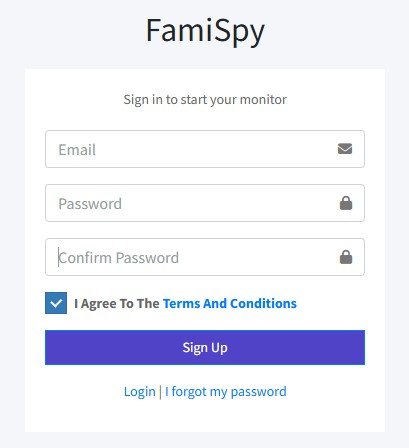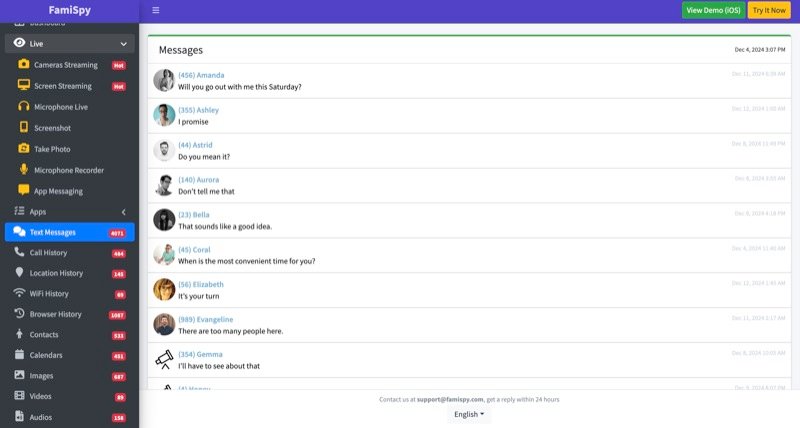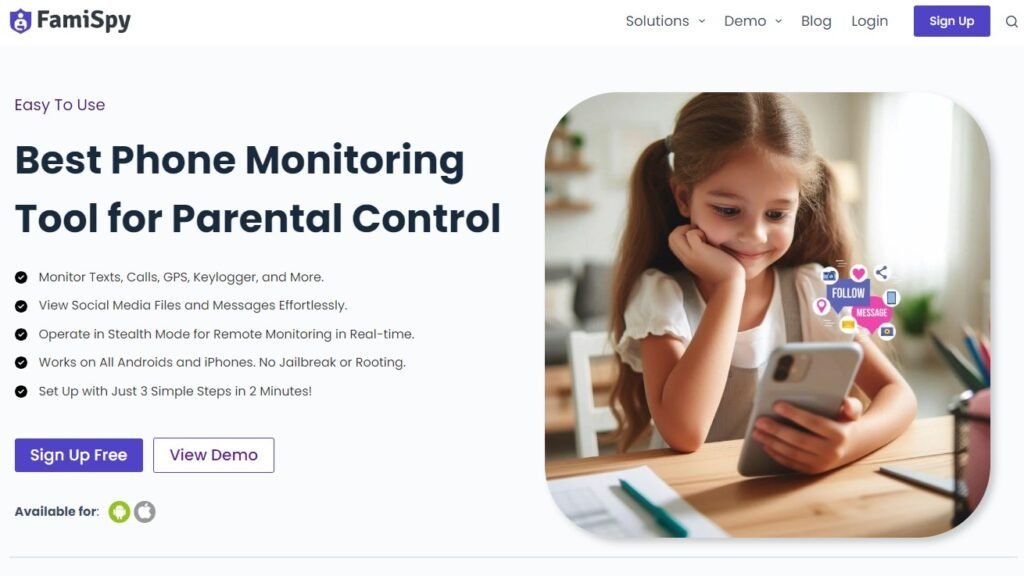You glance at your child’s phone and see it in an Instagram comment: “SFS?” Maybe it pops up in a text message. As a parent, it’s easy to feel one step behind the fast-paced world of online slang. When you see a new acronym, your first question is simple: what does SFS mean?
You’ve come to the right place. In short, SFS most often stands for “Shoutout for Shoutout.”
It’s a form of social media currency, a way for users to agree to promote each other’s accounts. But the SFS meaning can change depending on the platform, and more importantly, it can open doors to online risks you should be aware of.
This guide will break down the SFS meaning on Instagram, Snapchat, and in texting, what the hidden dangers are, and how you can guide your child to be safer online.

Stop Guessing: Get the Truth Behind All Social Slang Now
Worried about your child meeting strangers through “SFS”? Don’t let anxiety become a barrier. FamiSpy provides the objective information needed for open communication, helping you build stronger parent-child trust.
VIEW DEMODecoding SFS Meaning on Instagram, Snapchat, and Text
The “SFS” abbreviation isn’t just one single thing. Its meaning shifts based on the app. As authoritative sources like Dictionary explain, the key is understanding the context.
SFS Meaning on Instagram: “Shoutout for Shoutout”
This is the most common meaning of SFS.
- What it is: A “shoutout” is when one user promotes another user’s account, usually in their Instagram Story or in a post.
- How it works: User A sends a message to User B (or posts “SFS” in their comments) to see if they will agree. If User B agrees, User A posts a screenshot of User B’s profile and tags them, writing something like “Follow @UserB!” Then, User B does the exact same thing for User A.
- The Goal: It’s a simple, free way to cross-promote and get more followers. It’s all about growing their audience.

What SFS Means on Snapchat: “Snap for Snap”
The context on Snapchat is different. Since there’s no public “follower” count to grow, SFS takes on a new role.
- What it is: “Snap for Snap” is an agreement to send snaps (pictures or short videos) back and forth.
- How it works: A user might send this to someone to start a conversation or, more commonly, to maintain a “Snapstreak.”
- The Goal: A Snapstreak (the little fire emoji 🔥) appears next to a friend’s name when you have sent snaps to each other every day for several days. Losing a streak can be genuinely upsetting for teens, so “Snap for Snap” is a way to ensure the streak stays alive.

Other Meanings (Like in Texting)
While less common, you might also see SFS used to mean:
- Spam for Spam: This is similar to “like for like” (LFL) or “comment for comment” (CFC). It means, “I will ‘spam’ your posts with likes and comments if you do the same for me.”
- So Freaking Stressed: In a private text, a teen might just use it as slang for “So Freaking Stressed.”
How can you tell the difference? Look at the platform. If it’s on a public Instagram post, it’s about followers. If it’s on Snapchat, it’s about streaks. If it’s in a private text, it’s most likely about organizing a “shoutout” on another platform.

Is SFS Dangerous? Online Safety Risks Parents Should Know
At first glance, SFS seems harmless. It’s just kids helping each other get more followers, right?
Unfortunately, it’s not always that simple. SFS is often the first step in creating connections with total strangers, which carries real risks for teen online safety.
Risk 1: Interacting with Strangers
The entire point of SFS is to reach people outside your child’s existing friend group. They are actively inviting strangers to follow them and interacting with strangers to get a “shoutout.”
This opens the door to:
- Online Predators: People who may pose as other teens to gain trust.
- Scammers: Fake accounts that promise a “shoutout” but are trying to steal login information or personal data.
- Cyberbullies: Inviting new, unknown people into their world also invites new, unknown sources of potential bullying and harassment.
Risk 2: Exposure to Inappropriate Content
When your child agrees to “SFS” with another account, they are also agreeing to promote that account’s content.
What if that other account contains:
- Nudity or sexually suggestive material?
- Hate speech, racism, or extremist views?
- Content promoting drug use or self-harm?
Your child may not even look at the other person’s full profile before agreeing. They might end up promoting something harmful to their own friends or being exposed to it themselves.
Risk 3: The Pressure for Popularity
SFS is a symptom of a larger problem: the intense pressure to be popular online. A teen’s self-worth can become dangerously tied to their follower count or how many likes they get.
This pressure can lead to:
- Anxiety and Depression: Constantly worrying about their online image.
- Risky Behavior: Doing things they normally wouldn’t (like SFS with strangers) just to get more followers.
- Poor Judgement: Prioritizing online status over real-world safety and privacy.
How to Protect Your Child in the Age of SFS
So, what can a parent do? Banning social media entirely often isn’t realistic and can make kids more secretive. The key is a balance of trust, communication, and smart tools. This is where a monitoring tool like FamiSpy can be a lifeline. It’s not about “spying”—it’s about gaining the visibility you need to have informed, helpful conversations. Instead of guessing, FamiSpy helps you see the full context of their digital world so you can guide them safely through it.
What FamiSpy Helps You See:
- Social App Monitoring: See their messages and activity on popular apps like Instagram, Snapchat, and WhatsApp. This helps you understand who they are arranging an “SFS” with.
- View Browser History: Check which websites they are visiting, especially if they are clicking on suspicious links from new “friends” they met through SFS.
- Check App Usage: Understand how much time they spend on social media apps and which ones are the most popular.
- Read Text Messages: Monitor their SMS and iMessages to see the full picture of their conversations, including any slang you don’t recognize.
- View Call Logs & Contacts: See who they are communicating with (both calls and texts) outside of their main social media apps.
A 3-Step Guide to Handling SFS with FamiSpy
Here is how you can use this information not just to monitor, but to parent effectively.
Step 1: Create Account and Install the App
Start by creating an account on the FamiSpy website and completing your subscription purchase. You will then follow the straightforward instructions to install the app directly on the target phone or connect it using their iCloud credentials.

Step 2: Monitor and Understand the Context
Log into your secure Parent Dashboard to see synchronized data from your child’s device. Review their chats, app usage, and contacts to gain the necessary context regarding any SFS activities or interactions with strangers.

Step 3: Communicate and Guide with Facts
Use the objective facts and context you have gathered to calmly initiate a conversation about online safety. This approach helps you guide your child effectively, fostering trust while setting clear and healthy boundaries.
Beyond SFS: Social Media Slang Parents Should Know
SFS is just the tip of the iceberg. The world of online slang is constantly evolving. You might see your child say GTG (got to go) or “wb” when a friend returns. Here are a few other common terms you might see.
| Slang Term | Meaning | Context for Parents |
|---|---|---|
| S4S | Share for Share | Essentially the same agreement as SFS (Shoutout for Shoutout). Used for cross-promotion and follower growth. |
| NFS | Not For Sale | Used in posts to indicate an item (e.g., clothing, art, collectible accounts) is not available for purchase or trade. |
| L4L / LFL | Like for Like | A direct request for users to exchange likes. Promotes engagement metrics artificially, leading to pressure. |
| C4C / CFC | Comment for Comment | An agreement to exchange comments on each other’s posts. Boosts visibility and post performance. |
| ATM | At The Moment | In texting, this abbreviation means “right now” or “currently.” (Note: Not the bank machine.) |
| OG | Original Gangster | Used positively to show respect or admiration for someone/something being “old-school,” authentic, or a true pioneer. |
| WB | Welcome Back | A common term used in instant messaging or gaming chats when someone returns after being offline or inactive for a period. |
FAQs
Conclusion
Understanding "SFS" is about more than just knowing a new acronym. It's about understanding why your child is using it—for connection, for validation, for popularity.
While you can't learn every new slang term that pops up, you can create a safe environment for your child. This starts with open communication and is supported by having the right tools to see the risks before they become problems.
Don't just guess what "SFS" means—know. Protect your child from the hidden risks of online interactions. Try FamiSpy today and gain the peace of mind every parent deserves.








